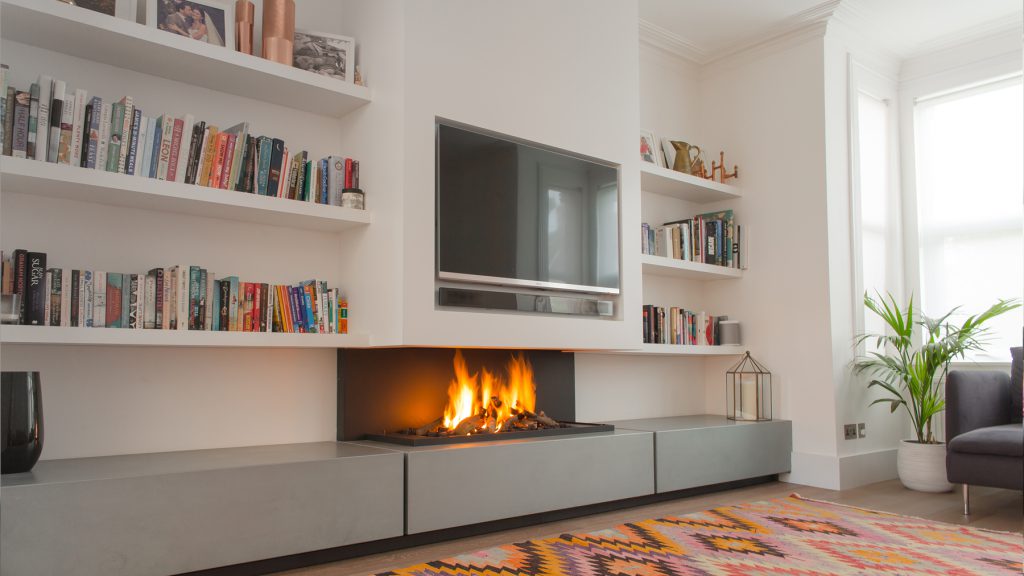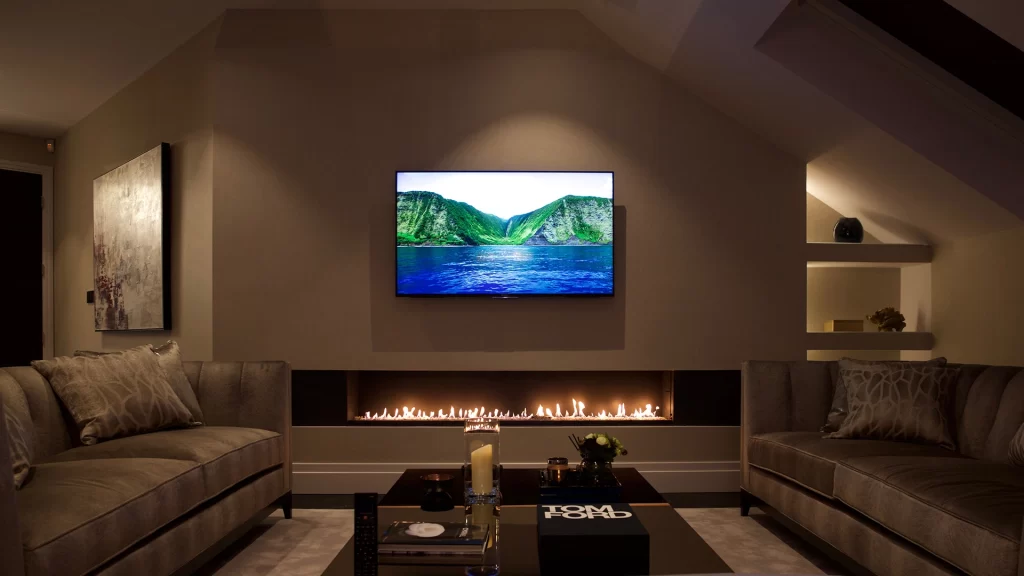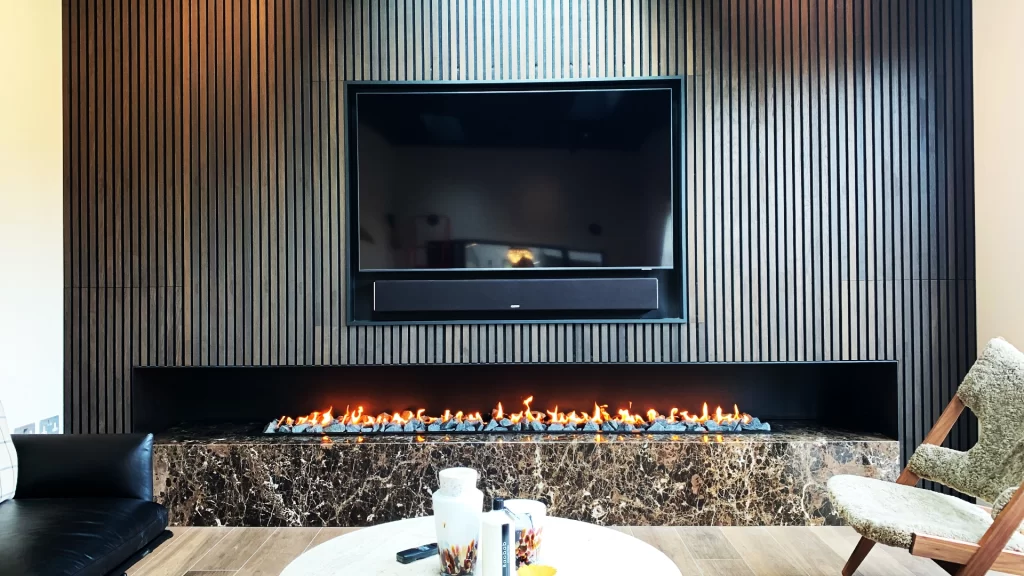3rd January 2024
Can you put a TV Above a Fireplace?

In contemporary interior design, there is a growing desire among homeowners to seamlessly merge two key focal points in their living spaces: the timeless allure of a fireplace and the modern appeal of a state-of-the-art television.
This harmonious union allows for the enjoyment of both cosy fireside moments and captivating cinematic experiences. However, the prospect of combining these elements raises concerns, particularly the potential impact of fireplace heat on the TV.
While most television manufacturers do not officially endorse placing a TV above a fireplace, when executed with precision and adhering to specific guidelines, the risk of heat-related issues can be significantly mitigated.
With over 35 years of experience at Modus Fireplaces, we have adeptly designed numerous combinations of fireplaces and televisions, making us well-equipped to provide expert guidance on managing this classic pairing.
Here, we offer key recommendations for those contemplating this unique integration.

Mounting a TV Above a Gas Fireplace
To install a Gas fireplace, it’s important to determine whether your fireplace is vented or ventless.
This will inform your decision regarding the type of material that can be used above the fireplace as well as the amount of heat that is outputted.
The difference between a vented and ventless fireplace is that more heat is lost through a vented fireplace through a chimney. If your goal is to mount a TV above a Gas fireplace then our recommendation is to opt for a vented fireplace as this will allow heat to escape through the chimney as opposed to the living area.

Mounting a TV Above a Bio Ethanol Fireplace
Mounting a TV above a bio ethanol fireplace has become extremely popular in recent years, allowing you to enjoy the warmth of a fireplace whilst enjoying your favourite tv show.
To safeguard your TV from your fireplace, we advise you to have a minimum distance away from the TV and your bioethanol fireplace.
Although a bioethanol fireplace produces less heat than your traditional wood fireplace, it still emits enough heat to potentially cause damage to your fireplace.
Therefore, it’s recommended that when mounting a TV above a bio-ethanol fireplace safety measures are considered at all times.
Installation may not be straightforward so contact Modus and one of our design consultants will be able to provide you with additional information.
5 Considerations for a TV Above Fireplace
1. Fireplace Type: The choice of fireplace significantly influences the amount of heat it emits. For instance, an open-fronted gas fireplace yields lower heat output compared to a fully glass-fronted fireplace.
The latter, with its heated glass surface, radiates a greater level of heat. Opting for an open-fronted model can reduce the risk to the TV. Additionally, gas fireplaces are preferable to wood-burning ones due to their controlled heat output.
2. Ventilation: Adequate ventilation within the wall housing the fireplace is essential. Proper circulation of air within the fireplace enclosure helps disperse warm air more swiftly, preventing heat accumulation behind the TV.
This precaution is particularly crucial for glass-fronted gas fireplaces, as they generate higher temperatures that must be effectively managed.
3. Cabling: Ensure that all cables are meticulously insulated and isolated from heat sources. Improper cable management can lead to cable deterioration over time, including melting.
4. TV Height: Design the media wall layout so that the TV is positioned at a safe distance from the primary heat source, such as the fireplace’s opening.
Balancing the TV’s height above the floor to achieve both comfortable viewing and optimal distance from radiant heat is crucial.
Ideal heights may vary depending on the type of fireplace; for instance, glass-fronted fireplaces with their higher heat output may necessitate a different placement compared to open-fronted designs.
5. Material Selection: When constructing the media wall, the choice of materials and their respective insulating properties can affect the amount of heat transferred to the TV. Select materials with high insulating properties to minimise heat transfer. To further reduce heat transfer, consider incorporating high-temperature insulation cladding into the metal structure of the fireplace chamber.
While this guide offers essential considerations, it does not provide an exhaustive roadmap. However, it serves as a valuable starting point for designing a media wall that harmoniously integrates a TV and a fireplace.
The fusion of these elements is a popular design choice that can be executed effectively to ensure the fireplace’s enjoyment while minimising potential risks to the TV.
Reach out to our dedicated team at Modus Fireplaces to explore how we can collaborate with you to craft your dream media wall.